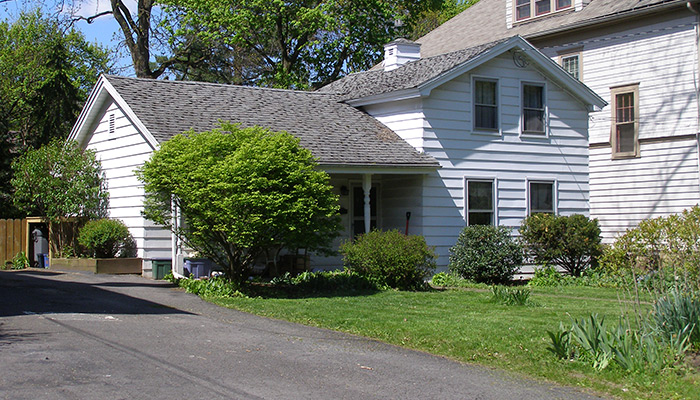The Old Neighborhood Part I
Stop #64
704 South Beech Street
- Built: ca. 1830's
- Architect: Unknown
This small farmhouse, framed by a large black walnut tree, is the oldest house in the area. The dimensions and the upright-and-wing L-plan house (sometimes referred to as a “gable and wing” ) suggest a date of the 1830s, though some elements, like the porch with its lathe-turned spindles date from the second half of the 19th century. This house originally sat on a substantial parcel of land which the owner would have farmed. Out buildings almost certainly existed to the rear of the house.
The upright-and-wing house is possibly the most local house type to our region, having evolved in New England and Upstate New York in the early 1800s. The form combines the traditional 2-story gable-front house or the 1 ½ story gable front cottage into a vernacular simplification of the formal Greek Revival “Temple and Wing House.” This house type could be built in stages or all of-a-piece. There are only a few examples on the Eastside of Syracuse, because of the relatively last development of this area when other styles were preferred. But examples can still be found throughout the region.
Carol Simson has lived in the house since 1977 and owned it since 1982, gradually revealing, restoring and renewing its original features. The large floor boards cut with a reciprocating saw are an indication of its age. The house was built before the time when the city kept records, but Carol believes it may have been built for one of the daughters of the Ostrom family, which once owned this tract.
Sources:
Jakle, John A; Bastian, Robert W.; and Meyer, Douglas K. Common Houses in America’s Small Towns: The Atlantic Seaboard to the Mississippi Valley (Athens, Ga and London: University of Georgia Press, 1989), 157-160, 224.
